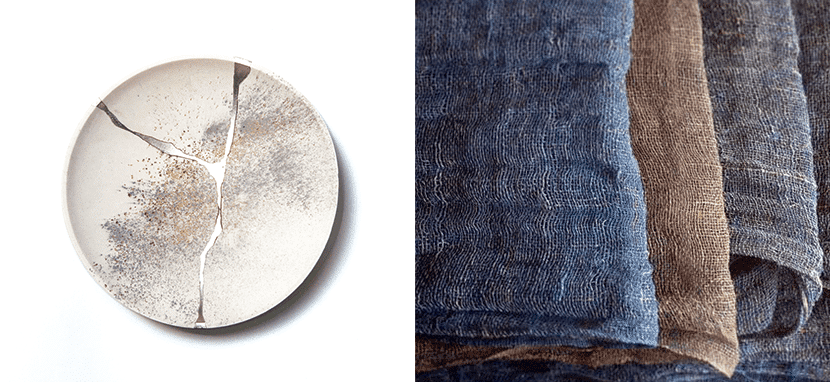
The Cake Maker
Wabi-Sabi is a Japanese trend whose origin comes from tea ceremonies. This current, not only aesthetic but also philosophical, speaks of the nature observation, acceptance of imperfection and the appreciation of beauty in ugly things. Leonard Koren in his book "Wabi-Sabi for Artists, Designers, Poets and Philosophers" talks about this Japanese aesthetic as a way of approaching life and the environment that surrounds us.
“Wabi-Sabi is the beauty of imperfect, impermanent and incomplete things.
It is the beauty of modest and humble things.
It is the beauty of unconventional things. "
Originally, "Wabi" and "Sabi" had different meanings. "Sabi" meant "cold" or "withered", while "Wabi" meant the misery of living alone in nature. Starting in the fourteenth century, these meanings evolved towards more positive values. Today these concepts have become so blurred that it is difficult to mention one without referring to the other. We can speak of "Wabi" and refer to the rustic simplicity of those objects created by man in the natural world, as well as speak of "Sabi" referring to the beauty of that which is perishing.
These values of imperfection and transience have deep roots in Buddhism and Japanese society. However, these values can be seen in Western art and culture.
What values does this aesthetic and philosophical current defend?
Currently Wabi-Sabi defends the observation of nature as the search for truth. Three lessons derive from this observation: Nothing is permanent, everything is imperfect y everything is incomplete.
Keeping these concepts clear, elements such as handcrafted pieces, cracks in ceramics, materials such as linen or wool, can perfectly define this aesthetic and philosophical trend. Wabi-Sabi is the beauty of things withered, worn, tarnished, scarred, evanescent, ephemeral.

Wabi-Sabi and graphic design
The design inspired by the Wabi-Sabi is a visceral design, where texture and wear is the protagonist. In this way, it values the imperfect and the incomplete. A simple, functional and austere design is a design that is close to Wabi-Sabi thinking. Thinking that everything has a process and things change leads to the perspective that it is not imperative to create a perfect design: if nothing lasts forever, why pursue perfection? By thinking of design as something temporary, it is easy to come up with a simple and functional design. It's about celebrating imperfection.

Design by Toby Ng Design
What are the elements that accompany this type of design?
- Rough finishes
- Simplicity and minimalism
- Asymmetry
- Imbalance
- Flat and neutral colors
- Textures
- Wear and tear
- Organic influences
- Disharmony
Wabi-sabi began as a philosophy based on the Buddhist values of loneliness, transience, and suffering. This was leading to a vision tailored, austere, Brown e imperfect. From these elements, a design movement was created that is increasingly in trend, although it has just arrived in the West.